Last week, "Network Gateway Solutions LLC" filed a patent infringement case against many (but not all) VoIP gateway vendors. It's court case 1:09-cv-00667-UNA at the moment. (Justia)
You can download the complete court filings here. (I paid the PACER document access fees for you.)
- Complete ZIP file of documents available as of 2009 September 11 (4.5 MB)
- Document 1: Main Document, 38 pages
- Document 2: PDF of patent, Exhibit A, 46 pages
- Document 3: Civil Cover Sheet
US Patent 5,912,888 is in question. (US Patent and Trademark Office version.) The Patent was filed originally by US Robotics. It describes a Network Access Server, such as the US Robotics Total Control system. I worked extensively with the US Robotics TC system at a regional ISP in the 1990s. It was eventually sold to and marketed by 3Com.
The patent is a continuation of a patent that was filed June 9, 1994. It describes an "all-digital" system, where the Network Access Server has a T1 link to the telephone network. Back in 1994 and 1995, it was much more common for smallish ISPs to have analog modems connected via RS232 port to a network access server.
What companies are being sued?
Many (but not all) of the big names in VoIP network gateways.
- Adtran Inc -- sued for TA900
- Audiocodes Ltd. -- sued for Mediant 1000 MSBG
- Audiocodes Inc.
- Avaya Inc. -- G350 media gateway
- Cisco Systems Inc. -- AS5350 universal gateway
- Genband Inc. -- G6
- Juniper Networks,Inc. -- J2320
- Alcatel-Lucent -- CellPipe CELL-IAD-8T
- Alcatel-Lucent USA Inc. -- CELL-IAD-8T
- Media5 Corporation -- Mediatrix 3000
- Mediatrix Telecom Inc.-- Mediatrix 3000
- Metaswitch Inc.-- PB3100 card
- Mitel Networks Corporation -- MNC SX-200
- Mitel Networks Inc. -- MNi SX-200
- Multi-Tech Systems Inc.-- MultiVOIP MVP2410
- Patton Electronics Co. -- SmartNode 4960
- Quintum Technologies LLC -- Tenor Gateway DX2008
- Siemens AG -- HiPath RG2500
- Siemens Corporation -- HiPath RG2500
- Sonus Networks Inc. -- Sonus GSX9000
- Zhone Technologies Inc. -- IMACS-200
How did Digium, Taqua, Tekelec, and Nortel get left out of the list? Certainly they didn't actually buy a license for this patent.
So does this patent apply to modern VoIP gateways?
It's a real stretch to adapt this to VoIP equipment. The actual complaint sues on the basis of Claim 2 in the patent. The standard complaint is,
Defendant X, within United States, manufactures, uses, offers for sale, or sells network gateway systems including, but not limited to, Y, that fall within thte '888 patent. These devices have an all-digital network access system that connects remote computers for generating digital data to a network computer on a local or wide are a network via a digital telephone line. The Y includes modems, a telephone control interface, telephone bus, digital signal processing system, parallel bus, and a network gateway controller. At a minimum, X's Y contains each limitation set forth in at least claim 2 of the '888 patent.
The limitations of Claim 2 require (summarized in my language)
- At least one modem
- A telephone control interface for TDM management
- A telephone bus
- A digital signal processor (DSP) system for demodulating time-spaced bus signals into incoming binary data without conversion to analog form
- A parallel bus connected to the DSP
- A network gateway controller connected to that parallel bus, that formats the data for transmission on the local area network (like Ethernet.
The key problem for Network Gateway Solutions, LLC is that VoIP gateways have no modem. They have a digital network interface connected to the PSTN, usually in the form of DS1/T1 or DS3/T3 CSU/DSUs, but they don't have a "modem" in any conventional sense. And the lack of a modem is key to the distinction: this patent '888 relates to computers dialing in over modems, through the PSTN, to a network access server (NAS).
Claims of the Patent vs Modern VoIP Gateways
But let's look at all the claims, because they all hang together.
Patent Claims 1 and 2, "An all-digital network access server connecting remote computers generating digital data to a network computer on a local or wide area network": The inventor claims a system that connects a computer to an analog modem which connects to the digital PSTN, and eventually gets connected to another modem in the Network Access Server. But in a VoIP network, there isn't a computer on the PSTN side: it's a telephone in the kitchen.
Patent Claim 3 discusses "said incoming binary data", which data was generated by the digital computer connected to the analog modem of Claim 1.
Patent Claim 4 discusses the "packet of data from said network computer" (at the service provider) "destined for said remote computers" (connected to the analog modems) "via said digital telephone line". Again, there are no computers at the other end of the PSTN. Just phones in kitchens.
Patent Claim 5 also relates to the digital computer at the other end.
Patent Claim 6 discusses "an all-digital network access server for receiving and transmitting calls representing digital data", but in VoIP calls, the calls don't represent digital data. They represent calls.
The key to the Network Access Server is a digital computer at the far end of the connection, using an analog modem to connect to the PSTN. But in modern VoIP there is no analog modem. You might stretch to say that SIP phones are a type of digital computer, but there is no analog modem involved.
So if none of the claims relate to telephone calls, what could they possibly have on MetaSwitch, AudioCodes, and others?
So who DOES this patent apply to?
I believe this patent does not properly apply to VoIP network gateways because there is no modem involved in a VoIP gateway, as described in patent '888.
I'm not opposed to patents in principle. This all-digital network access system is a useful and innovative invention from the early 1990s. I do think Network Gateway Solutions LLC got one defendant right: The Cisco AS5300, AS5350, AS5400, etc that can operate with MICA modems do have modem capabilities. It appears that they are covered under this patent.
I am not a lawyer, but patents are about technology and precise thinking. Both of those are interesting. The Verizon Patent Win Against Vonage is also interesting to study because it applies quite broadly to VoIP Carriers.

